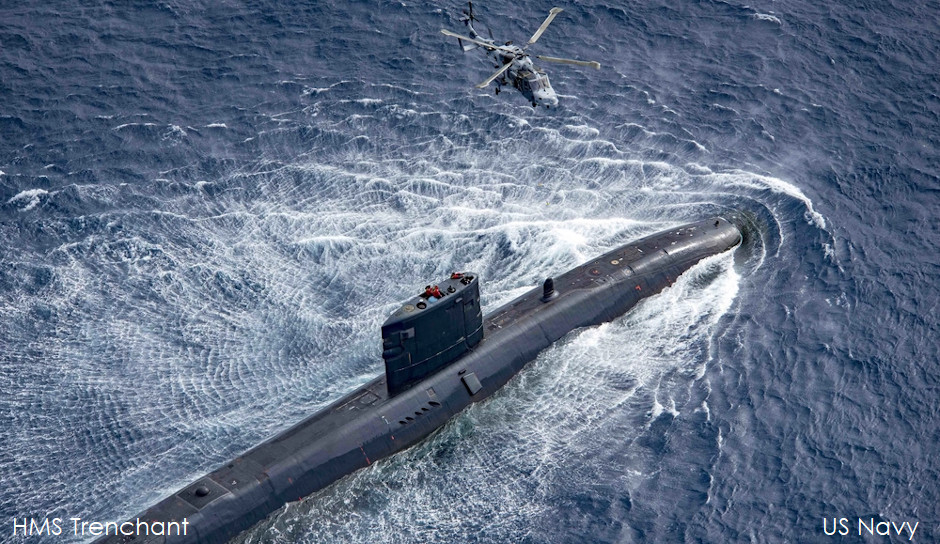Nuclear Submarine Race: Which Navies Have, Will Have or Want Them

Nuclear Submarine Race: Which Navies Have, Will Have or Want Them
With news that Australia is joining the nuclear submarine club, it is worth recapping which countries are building them. The number is increasing, and this might be a possible factor in the US and UK’s sudden willingness to add Australia to the list. I’ll put these into five categories:
- Big Four - established Nuclear Submarine operators
- China - established but also likely increasing massively
- New Entrants - India, Brazil and now Australia
- Aspiring Navies - countries who might in the future
- Historical Projects - countries which once had programs but are now abandoned
1. Big Four
I’ll move quickly through these, you aren’t reading the article for them. Nuclear submarines were pioneered by the US Navy, with USS Nautilus first sailing in 1955. The USSR (now Russia) was not that far behind. By 1960s the Royal Navy had joined the club, with some US help. And France also joined the club by the end of the decade. These countries all operate ballistic missile submarines (SSBNs) and attack submarines (SSNs), plus a few special boats. Of the big four, only Russia still operates any non-nuclear submarines. In general their technology is now mature, safe and reliable. These are the countries setting the standard.
2. China
I’d normally group the Chinese Navy (PLAN) with the big four (so big five). Their nuclear submarine program goes back to the 1960s, and they now have plenty of boats and experience. But they took longer getting here and, more importantly in relation to the Australian news, there are signs of an imminent increase.
Recently China has been investing in its nuclear submarine construction facilities at Huludao. The capacity to build nuclear submarines has been multiplied, but we are still waiting for the first boat to emerge. When it does, it might be one of the new classes that they are building. These are likely to be significantly better, in almost every respect, to the existing boats. The gap to current western and Russian SSNs and SSBNs will likely decrease. Additionally, China has proven itself capable of radical experimentation, at scale, so they are not boxed in to just playing catch-up.
3. New Entrants
Australia is not the only country pursuing nuclear submarines.
India has already inducted its first indigenous SSBN, the INS Arihant, into service. And is building more, plus it has an SSN program. Progress is steady.
Brazil has the SN Álvaro Alberto (SN-10) under construction. This SSN uses French design help, but will have a Brazilian developed reactor. It is roughly in the same category as the French Suffren Class, although more conservative generally.
Get The essential guide to World Submarines
This Covert Shores Recognition Guide Covers over 80 classes of submarines including all types currently in service with World Navies.
Check it out on Amazon
4. Aspiring Navies
This group includes some informed speculation. South Korea is often talked about in these terms. But their non-nuclear submarine program is also gaining attention as they are ahead of the curve in adopting new battery technologies. And they are the first country to put a VLS with cruise missiles and ballistic missiles on a regular AIP (air independent power) submarine. But if South Korea feels the need to go nuclear, they do seem to have the technology and experience to make short work of it.
North Korea is also a possibility. They have nuclear weapons and nuclear reactors, and the ability to surprise. But overall their submarine technology is dated so any SSN would likely be quite basic. All the same it would radically change their threat profile.
Iran has stated an intention to build a nuclear submarine. Worth taking seriously, but don’t hold your breath.
Other countries to watch include Japan (caveats), Pakistan, middle eastern countries and Canada. For the latter, the political conditions appear to have changed since the 1980s. Possibly the US and UK would now welcome and aid them like they did Australia. SSNs would make a lot of sense given their artic challenges and two-ocean stretch. But this really is speculation on my part.
5. Historical Projects
Just to complete the list, I should mention that back in the 1960s a couple of countries had serious SSN programs. At the time, soon after the US Navy first got them, nuclear submarines seemed like the main way forward. Indeed they were for the biggest navies, but it took some years for middle-sized navies to realize that they couldn’t afford to keep up. Sweden had an SSN program, and Italy too. Both fizzled out by the mid-1960s.
Related articles (Full index of popular Covert Shores articles)

 Suffren (Barracuda) Class Attack Submarine w/Cutaway
Suffren (Barracuda) Class Attack Submarine w/Cutaway

 INS Arihant, Indian SSBN and .2
INS Arihant, Indian SSBN and .2

 Chinese Type-093 Shang Class Submarine w/Cutaway
Chinese Type-093 Shang Class Submarine w/Cutaway

 Trafalgar Class w/Cutaway
Trafalgar Class w/Cutaway




